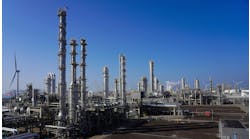Back in 1792 when AkzoNobel started supplying paints and coatings, wood was the main source of energy. While not quite that green, the company has sort of gone full circle with its use of renewable electricity and has been recognized by the U.S. Environmental Protection Agency’s Green Power Partnership for using 69 million kilowatt-hours of green power annually at its manufacturing sites in the U.S., achieved through the purchase of renewable electricity with certificates of origin, according to a June 6 news release. A renewable energy certificate or guarantee of origin is a recording of information created to document the fact that one megawatt-hour of electricity is generated and supplied (net) to the shared electrical grid through the use of specified and eligible renewable energy resources.
According to the EPA, AkzoNobel’s U.S. manufacturing sites' green power use in 2023 is equivalent to the electricity use of more than 6,400 average American homes annually.
“At AkzoNobel, we have set an ambitious goal to reduce the carbon footprint in our operations (scope 1 and 2) and in our value chain (scope 3) by 50% by the target deadline of 2030. We are proud of our partnership with the EPA on the use of renewable electricity in our manufacturing operations in the U.S.,” said Wijnand Bruinsma, AkzoNobel Global Director of Sustainability. “Through the Green Power Partnership, we aim to promote the acceleration of the energy transition for our U.S. value chain partners and for our customers as an addition to our ongoing efforts helping them increase their energy efficiency and reducing their carbon footprint.”
According to its website, AkzoNobel as of 2023 has seen a 38% reduction in carbon emissions, 62% renewable electricity in its own operations, 82 locations are using 100% renewable electricity, 31 sites using solar panels as a supplementary source of energy, 100% renewable electricity in Europe since January 2022 and North America since January 2023 and a 1% reduction in total energy use.



